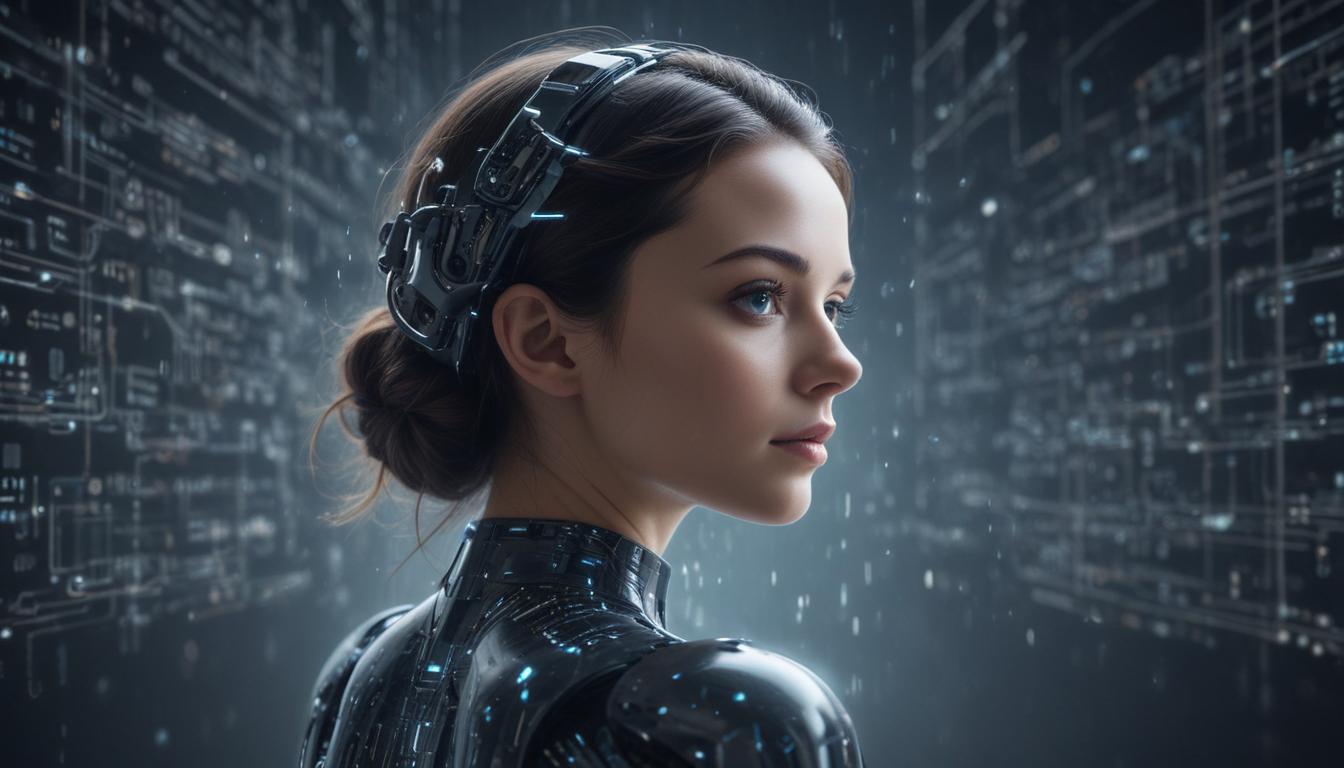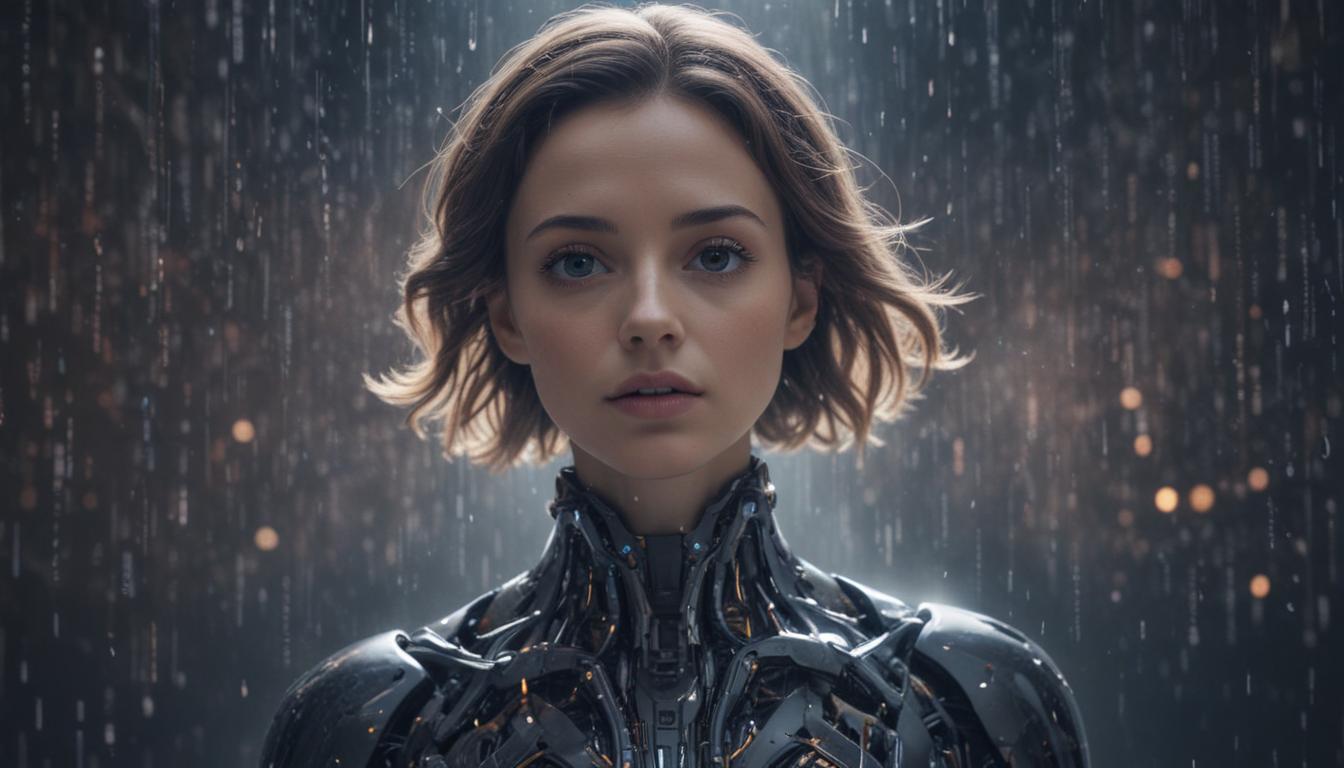Now Reading: AI Content Generation Explained
- 01
AI Content Generation Explained
AI Content Generation Explained

Generative AI Creating New Content with Artificial Intelligence
Are you struggling to keep up with the relentless demand for new content? The pressure to constantly publish fresh blog posts, engaging social media updates, and compelling marketing copy can be overwhelming. You might find yourself staring at a blank screen, battling writer’s block, or simply running out of hours in the day. What if you had a creative partner that could help you brainstorm ideas, draft text, and even generate stunning visuals, all in a fraction of the time it normally takes?
This is not a far-off fantasy; it’s the reality made possible by Generative AI. This transformative technology is no longer just a concept for tech enthusiasts. It has become a practical and powerful tool that professionals across all industries can use to augment their creativity and supercharge their productivity. By learning to leverage Generative AI, you can move from a state of content anxiety to one of creative abundance, freeing up your time to focus on strategy, refinement, and the big picture.
What Exactly Is Generative AI
At its core, Generative AI is a type of artificial intelligence that doesn’t just analyze or categorize information; it creates something entirely new. Think of it like a brilliant student who has studied thousands of books, paintings, and musical compositions. After consuming all that data, this student doesn’t just recite what they’ve learned—they can write a new poem, paint a unique picture, or compose a new melody in the style of the masters they studied. Generative AI works on a similar principle, but on a massive scale.
These AI models are trained on vast datasets of text, images, code, and other information from the internet. By identifying and understanding the patterns, structures, and relationships within this data, they learn the “rules” of how to create. When you give a tool like ChatGPT a text prompt, it uses its understanding of language to generate a coherent, contextually relevant response. When you ask an image generator like Midjourney or DALL-E to create a picture, it synthesizes its visual knowledge to produce a brand-new image that matches your description. It’s a process of sophisticated pattern recognition and creative reconstruction.
How Generative AI is Changing Industries
The impact of Generative AI is not confined to a single area; it’s a versatile technology that is revolutionizing workflows across various professional fields. From marketing to software development, it acts as a powerful assistant that amplifies human capability.
For Marketers and Business Owners
For marketers, the ability to produce high-quality content at scale is a constant challenge. Generative AI provides a direct solution, acting as an indefatigable writing assistant. It can draft entire blog posts from a simple outline, generate dozens of social media captions for a campaign, or write persuasive email marketing sequences. This dramatically cuts down the time spent on initial content creation, allowing teams to focus more on editing, optimization, and strategic planning.
Beyond just speed, these tools are excellent for brainstorming and overcoming creative blocks. Stuck on a headline? Ask for twenty different options. Need a new angle for a product launch? Prompt the AI to generate a list of creative concepts. It can also help with personalization by creating tailored ad copy for different customer segments or rewriting product descriptions to appeal to various audiences. This blend of efficiency and creative support empowers businesses to maintain a robust and dynamic online presence.
For Artists and Designers
The visual world is also being transformed. For artists, illustrators, and designers, Generative AI has emerged as a revolutionary tool for inspiration and rapid prototyping. Instead of spending hours sketching out initial concepts, a designer can type a descriptive prompt—like “a minimalist logo for a coffee shop featuring a mountain sunrise”—and receive several visual starting points in seconds. This allows for faster exploration of different creative directions.
This technology is not here to replace artistic skill but to augment it. It can be used to generate unique textures, create background elements for a larger composition, or explore different color palettes. Concept artists in the gaming and film industries are using it to quickly visualize worlds and characters, iterating on ideas at a pace that was previously unimaginable. It’s a new kind of digital paintbrush that opens up endless possibilities for visual creation and experimentation.

Navigating the Future with Generative AI
As we embrace this powerful new technology, it is crucial to approach it with a clear understanding of its role. Generative AI is a tool, not a replacement for human expertise and judgment. The content it produces can sometimes contain inaccuracies, reflect biases from its training data, or lack the nuanced understanding that a human expert possesses. Therefore, the concept of human oversight is more important than ever. The most effective use of AI involves a partnership where the human guides, refines, and fact-checks the output.
The potential for innovation with Generative AI is immense. It lowers the barrier to entry for content creation, empowers small businesses to compete with larger corporations, and provides individuals with a co-pilot for their creative and professional tasks. By learning to craft effective prompts and critically evaluate the results, you can unlock a new level of productivity and creativity. The future belongs to those who learn to work alongside these intelligent systems, using them to amplify their own unique talents and vision.


































